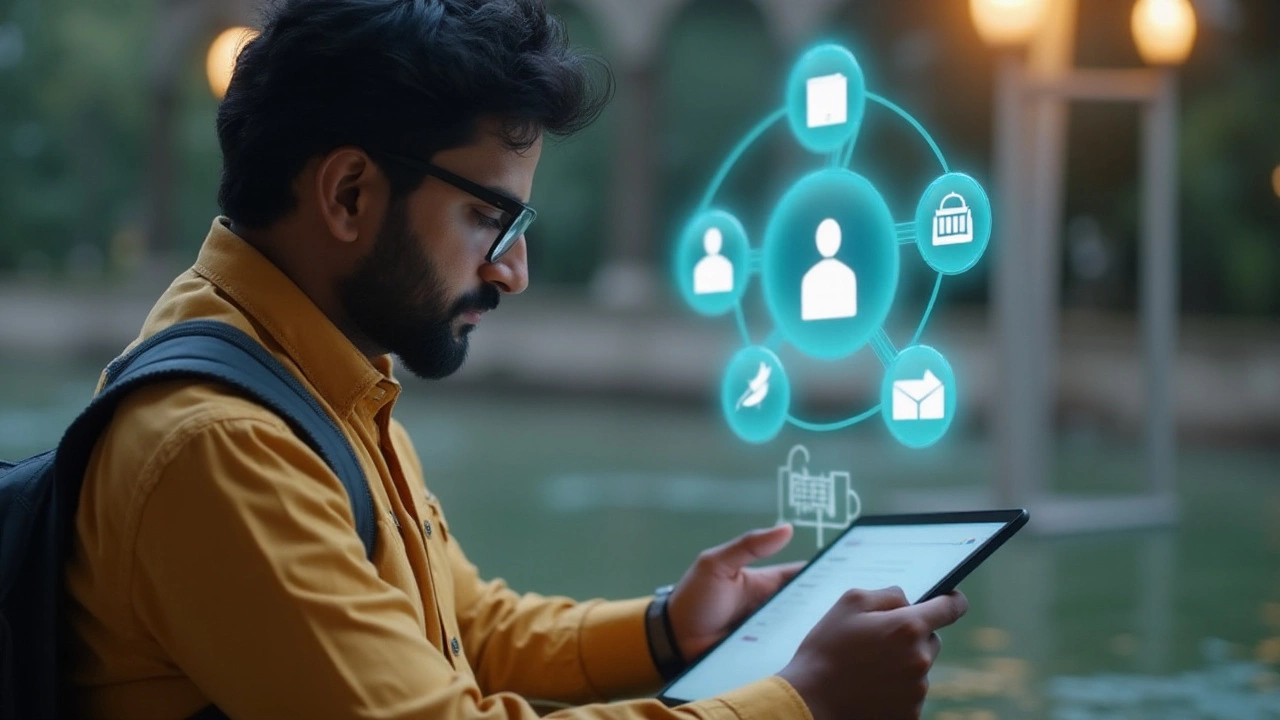In today's digital age, where classrooms have transcended physical boundaries, eLearning platforms have become the cornerstone of education. The secret to a successful online course often lies in the Three P's: Pedagogy, Personalization, and Participation. Each element plays a unique role in crafting an engaging and effective learning experience.
Pedagogy isn't just a fancy term for teaching methods; in the online world, it involves reimagining traditional approaches to accommodate diverse learning styles. Personalization, meanwhile, tailors the learning journey to individual needs, making content more relatable and impactful. And let's not forget Participation, which is about fostering a vibrant community where ideas flow freely.
Join us as we explore how to harness these three pillars to enrich your digital learning adventures. Discover innovative strategies and practical tips that will empower teachers and students alike. After all, in the realm of eLearning, the right approach can transform education into an endlessly engaging expedition.
- Understanding Pedagogy in eLearning
- The Role of Personalization
- Participation: Keys to Engagement
- Practical Tips for Implementation
- Future Trends and Innovations
Understanding Pedagogy in eLearning
Delving into the realm of eLearning, pedagogy takes on new dimensions, challenging educators to innovate beyond conventional methods. At its core, pedagogy in digital education is about how content is delivered and absorbed. In a world where learners span across different time zones and access courses through various devices, the foundational teaching methods adjust to meet these diverse needs. It's not just about translating a lecture into a video format but rethinking how interactivity, engagement, and assessment fit into a virtual environment.
One of the critical aspects of eLearning pedagogy is creating learner-centric courses. This involves understanding the cognitive load, which refers to the amount of information that a student's brain can process at a given time. Keeping this in mind, effective digital courses break content into manageable modules, providing learners the chance to absorb one concept before moving on to the next. Online quizzes and interactive elements scattered throughout the lessons can help solidify this knowledge.
Traditionally, pedagogy might focus on lectures and note-taking, but in eLearning, it’s about leveraging technology to enhance learning experiences. For instance, incorporating multimedia elements like videos, animations, and simulations can cater to different learning styles, making education not only informative but also exhilary engaging. Howard Gardner's theory of multiple intelligences suggests that students learn in varied ways, and eLearning allows courses to be designed with visual, auditory, and kinesthetic learners in mind.
"The art of teaching is the art of assisting discovery," said Mark Van Doren. In eLearning, assisting discovery translates into interactive modules that let students explore topics on their own.
Another key to understanding pedagogy in this digital era is the emphasis on collaborative learning. Unlike traditional classrooms, eLearning platforms can empower students to connect with peers globally. This kind of cooperation not only aids understanding but also prepares learners for future work environments that are more interconnected than ever before. Educators can facilitate this by integrating discussion forums, group projects, and peer review activities into their courses. These encourage students to learn from each other and share perspectives, enhancing their educational journey.
Statistics reveal the importance of thoughtful pedagogy in eLearning. According to a report by the Online Learning Consortium, courses that incorporate interactive content see a 35% higher engagement rate compared to those that rely solely on text. Such findings emphasize the necessity for educators to shift from the one-size-fits-all mentality to a more customized strategy that fits the digital stage. Adopting adaptive learning technologies that assess how well students grasp concepts and adjust accordingly can be pivotal in achieving this.
The Role of Personalization
Personalization in eLearning has revolutionized the way learners interact with digital content, transforming static modules into dynamic, engaging experiences. It's like tailoring a suit—each component is finely measured to fit the unique contours of the learner's needs and aspirations. For educators, the idea of personalization offers a promising frontier, blending technology with pedagogy to cater to individual learning paths. The main tools driving this are adaptive learning technologies, which assess a student's progress and preferences to propose customized solutions. These technologies analyze how learners interact with material, adjusting difficulty levels and presenting information in varied formats, ensuring that every student progresses at their own pace.
One known approach in digital education involves leveraging data analytics to track a learner's performance. Through careful analysis of this data, courses can adapt to fill gaps in knowledge, reiterate challenging concepts, and solidify understanding where it falters. This leads to a more intuitive learning journey, one where digital instructors are ever-responsive. According to a study conducted by the U.S. Department of Education, students in personalized learning environments showed an average increase of 12 percentile points on assessments compared to traditional settings. This underscores how impactful personalization can be in enhancing educational outcomes.
Moreover, when courses are personalized, learners feel a sense of ownership and achievement, as the content directly aligns with their personal goals and interests. Platforms that offer choice—whether in projects, collaborative efforts, or areas of focus—allow learners to exercise agency, propelling motivation and engagement. This enhanced involvement isn't just about keeping learners intrigued; it links deeply with retention and comprehension, as students are more likely to remember material they helped curate. As Sheryl Sandberg, COO of Facebook, once insightfully stated:
"Leadership is about making others better as a result of your presence and making sure that impact lasts in your absence."This sentiment elegantly maps onto the personalized learning experience, where educators empower students to excel independently.
To capitalize on the benefits of personalization in online courses, educators and developers must remain committed to refining their adaptive management systems and ensuring they are robust enough to handle broad spectrums of learning abilities. Building a course with a diverse set of resources—such as videos, simulations, interactive quizzes, and forums—fosters a rich environment poised to adapt and respond. When these elements are harmoniously integrated, online courses cease to be one-size-fits-all, morphing instead into a tapestry woven with the intricacies of each learner's expectations and needs. In this way, the role personalization plays in eLearning isn't just significant; it's transformative, laying a foundation for lifelong learning.

Participation: Keys to Engagement
Creating a lively and engaging eLearning environment hinges significantly on participation. This aspect is not only about logging in and answering quizzes but about nurturing a community where learners actively contribute and feel valued. A well-participating class tends to show increased motivation and deeper understanding of the subject matter. It's mainly because learners feel they're part of something bigger, a collective journey for knowledge. Discussion boards, real-time chat functions, and collaborative projects have been game-changers for digital education. Making these elements central to your course's design boosts interaction levels and transforms the learning experience from passive listening to active exchange.
One effective strategy for boosting participation is incorporating peer feedback sessions. They are surprisingly effective because feedback from peers often resonates more with students than comments from instructors. According to a study by the International Review of Research in Open and Distributed Learning, peer-reviewed activities not only increase engagement but raise the quality of work submitted by students, as they strive to meet collective expectations. Encouraging participants to post reflections or respond to peers' posts can substantially enrich the learning environment.
Gamification elements such as badges or leaderboards can also turn passive attendees into active participants. Introducing these elements fosters a competitive yet fun environment, motivating learners to surpass their own limits. If done correctly, it marries education with entertainment. In a survey conducted by TalentLMS, 83% of learners said they felt motivated when training included game-like mechanics.
"I kept up with the course because earning badges gave me a sense of accomplishment," remarked Laura M. in her discussion on eLearning courses.
To design a truly engaging course, it's essential to provide various forms of participation. Offering live video sessions, permitting chat options during lectures, and even enabling screen shares promote richer interactions. It’s also important to remember that not everyone is comfortable speaking up in virtual meetings. Therefore, offering anonymous polls and surveys can be an excellent way to ensure everyone's voice is heard. Keeping the communication lines open makes sure that learners feel they belong and can voice their ideas without fear.
Lastly, analyzing participation through metrics can give educators invaluable insights into learner engagement. Monitoring which resources are accessed most, the number of interactions in forums, and attendance in live sessions help in tailoring the course to better suit learner needs. These metrics can provide a better picture of what learners find captivating or challenging, helping educators tweak the approach for improved eLearning experiences. Some platforms offer participation dashboards where data like these can be easily viewed and analyzed, facilitating adjustments as needed.
Participation in eLearning shapes not only the success of the course but also the satisfaction of the students. Striking the right balance between teaching and interaction allows for a rich educational journey, empowering students and cultivating a thriving learning community. By implementing these strategies, educators can significantly enhance the virtual classroom, inviting engagement and interaction that mirror the dynamism of face-to-face discussions.
Practical Tips for Implementation
Embarking on the journey of integrating the Three P's into your eLearning platform? Let's break it down! Transitioning from traditional teaching methods to an effective and engaging digital education model is indeed a meticulous process. Ensuring solid pedagogical foundations is vital. Start by assessing the course objectives and aligning them with suitable digital methodologies. Whether it's incorporating multimedia elements or interactive quizzes, ensuring that your content is not only informative but also captivates the learner's attention is essential.
Once you have laid out the pedagogical approach, it's time to delve into personalization. This doesn't have to be as daunting as it sounds! Begin by offering varied learning paths, so students can choose how they wish to receive information. Analyze student data to understand preferences and challenges, and utilize adaptable technology, like AI-driven platforms that adjust difficulty levels based on performance. This creates a comfortable learning environment where each student finds material tailored to their needs and pace, which ultimately boosts retention rates.
Participation is the lifeline of any successful online community. Encouraging students to actively engage can be challenging but isn't impossible. Develop forums or discussion boards where students can share insights and foster peer-to-peer learning. Instructors can periodically host live Q&A sessions to clarify doubts immediately. Expert Michelle Miller once noted,
"Effective participation draws learners into a dialogue that increases understanding and sustains interest."These interactions not only enhance understanding but also promote a sense of belonging among students.
For some, the transition to a digital-first approach may seem cumbersome, but meticulous planning and execution can simplify it. Create a step-by-step action plan that includes regular feedback loops. Here’s a simple layout to guide you:
- Define educational goals and desired outcomes for each module.
- Select appropriate technologies that fit your pedagogical vision.
- Implement personalization through adaptive learning paths.
- Encourage active participation using engaging discussion formats.
- Conduct continual assessments and adjustments based on feedback.
Evaluating outcomes and iterating over time can significantly refine the end experience. Utilizing insights from regular post-course surveys ensures that the courses evolve alongside student expectations. Statistically speaking, online programs that adapt and evolve report an impressive 20% increase in student satisfaction, according to a recent survey by EdTech Digest. Being willing to iterate is key to staying relevant in the ever-evolving world of online courses.
To conclude, by focusing on these practical tips, you'll not only enhance your eLearning environment but also ensure that it meets the demands of today's learners. As the saying goes, "small steps lead to big changes." Implementing even one of these strategies could significantly transform your digital classroom, just as much as a well-placed quote can inspire the students within it.

Future Trends and Innovations
As we sail deeper into the digital age, the realm of eLearning is on the cusp of remarkable transformation. Leading the charge is Artificial Intelligence (AI), which is swiftly becoming entrenched in online platforms. AI doesn't just enhance administrative tasks; it's changing how students learn. Machine learning algorithms personalize content delivery, adapting to individual learning paces and styles, making the academic journey tailor-made for each student. Imagine a digital tutor that learns with you, offering alternative explanations when a concept doesn't click at first glance.
The marriage of AI and analytics provides insights that were once unimaginable. By analyzing data patterns, educators can now anticipate which students might struggle with a topic well before the final exam. These predictive capabilities allow for timely interventions, ensuring no learner is left behind. Personalization goes beyond merely adapting difficulty levels. We're now witnessing the emergence of content-curation based on students' interests. If a learner is fascinated by space science, materials can be customized to include relevant examples and case studies, deepening engagement and comprehension.
In conjunction with AI, Virtual and Augmented Reality (VR/AR) are adding a new dimension to digital education. These tools make learning truly immersive; history lessons transform into virtual time travel adventures, chemistry classes enable students to manipulate molecules in a 3D space, and language lessons mimic realistic social interactions with native speakers across the globe. Such experiences cater to visual and kinesthetic learners, making education engaging and effective.
Cathy Davidson, an educational pioneer, once said, "The classroom of tomorrow is a dynamic, exciting space where technology serves as a tool to inspire curiosity and innovation."
Another major trend is the rise of gamification—a strategy designed to make learning as engaging as a video game. By tapping into the competitive spirit innate in many learners, gamified elements such as points, badges, and leaderboards make education exciting. Coupled with real-time feedback, it's no wonder students often spend hours engrossed in their studies without feeling the weight of the clock.
Moreover, blockchain technology is emerging as an unsung hero in ensuring academic integrity and transparency. Digital credentials powered by blockchain offer a tamper-proof way to verify certificates and degrees. This innovation is paving the way for micro-credentials, where students can provide proof of specific skills and competencies to employers without needing a full degree. With such credentials, lifelong learning becomes a more structured and recognized pursuit.
Social learning is also gaining momentum, powered by online platforms and communities. Here, knowledge exchange happens organically, as students share insights, resources, and support. This collaborative spirit often leads to enhanced learning outcomes and encourages active participation. As this trend grows, traditional silos of education may dissolve, giving rise to more integrated and interdisciplinary learning environments.
To keep pace with these trends, educators and developers must remain agile, ready to adapt and integrate these tools into their curricula. As these innovations shape online courses, they wield the power to democratize education, making it more accessible and personalized than ever before. Indeed, the future of eLearning holds limitless possibilities, limited only by our imagination.





